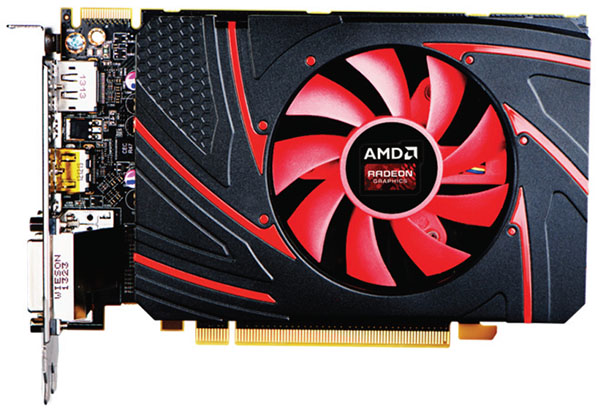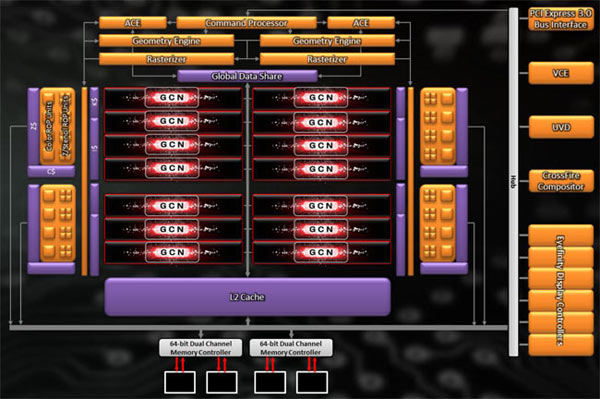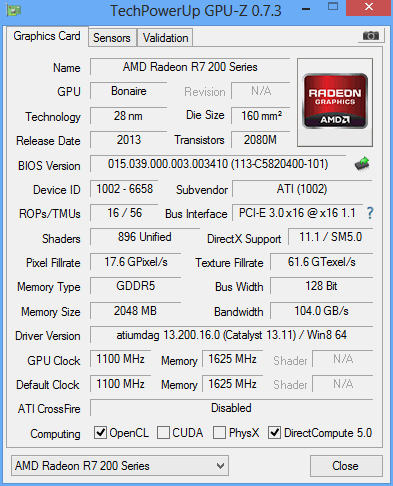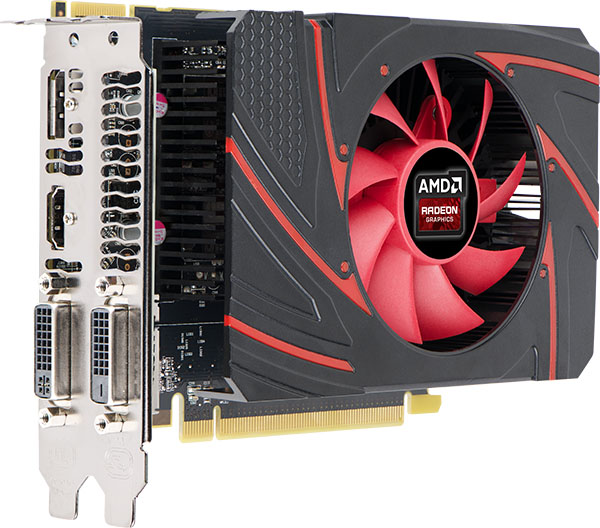AMD Radeon R9 280X, R9 270X, And R7 260X: Old GPUs, New Names
AMD is introducing a handful of new model names today, based on existing GPUs. Do the company's price adjustments make this introduction newsworthy, or will the excitement need to wait for its upcoming Radeon R9 290 and 290X, based on fresh silicon?
R7 260X: TrueAudio’s First Outing On The Back Of Bonaire
As you saw during our coverage of AMD’s GPU14 Tech Day in Hawaii, there are three SKUs in AMD’s line-up with TrueAudio support: R9 290X, R9 290 (neither of which are available yet), and R7 260X.
The Tensilica (a fabless semiconductor company) DSPs that enable TrueAudio are built onto AMD’s GPUs, which might make you think, “Ah ha, a new feature on-die—surely we must also be dealing with a new GPU, too.” Disappointingly, no. This functionality was actually part of the Bonaire processor that launched alongside Radeon HD 7790 (AMD Radeon HD 7790 Review: Graphics Core Next At $150, from March of this year), but was simply not enabled. Now, at least, it’s available for middleware developers to play with and, eventually, expose.
Bonaire, as it appeared on the Radeon HD 7790, boasted 896 shaders, 56 texture units, and 16 ROPs. The sample we reviewed had a GPU running at 1 GHz with 1 GB of GDDR5 memory at 6 GT/s on a 128-bit bus. Power, interestingly enough, was rated at 85 W, deliverable through the PCI Express slot and one six-pin lead. Bonaire was also AMD’s first GPU with an updated version of PowerTune featuring a second-generation voltage regulation controller able to control voltage in 6.25 mV steps. The result of this functionality is much faster response to changes in input (temperature, activity, or telemetry) and corresponding voltage/clock rate/fan speed adjustments.
The GPU that shows up on R7 260X features all of the same vital specs, including the newer PowerTune implementation. Only, its engine clock operates at up to 1.1 GHz. Its memory (now 2 GB instead of 1) streaks along at 1625 MHz over an aggregate 128-bit bus, serving up to 104 GB/s of bandwidth. It’s still serviceable by a single six-pin power cable, but the result of higher clock rates all around are a board power that jumps to 115 W. That’ll hardly be an issue for most folks.
As of this writing, Gigabyte has a Radeon HD 7790 running at 1075 MHz with 2 GB of memory at 1500 MHz selling for $140 on Newegg. AMD plans to sell the R7 260X for the same $140. Most of the other 7790s are 1 GB models, so AMD is still adding some value. But there’s really not much to get excited about in the shift from Radeon HD 7790 to R7 260X, aside from TrueAudio getting switched on. And even then, we need to wait for the feature to get enabled in upcoming games.
Get Tom's Hardware's best news and in-depth reviews, straight to your inbox.
Current page: R7 260X: TrueAudio’s First Outing On The Back Of Bonaire
Prev Page R9 270X: Pitcairn Gets A Little Boost Next Page TrueAudio: Dedicated Resources For Sound Processing-
CaptainTom Wow what's with the AMD hate? As it stands they are doing the same thing Nvidia did except without the outrageous prices. The GTX 770 wasn't a great deal when the 7970 was $50 cheaper. Have fun trying to run BF3 with 2GB of VRAM...Reply -
slomo4sho Nothing revolutionary but better prices I suppose.Reply
The MSI R9 280X Gaming at $299 appears to outperform the GTX 770 at 1600P and is within margin of error at 1080P according to Techpowerup. Not a bad value at $100 less and still overclocks well:
http://www.techpowerup.com/reviews/MSI/R9_280X_Gaming/26.html -
jimmysmitty So long story short, if you have a HD7970GHz then these do nothing for you.Reply
Best to hold out till the reviews on the R9-290X I guess. But considering the specs I hope for at least 20% performance increases over a 7970. -
Shankovich What happened to Chris? I didn't see this kind of hate with all of the 700 series rebrands. Also, to the Canadians here, grab the $270 7970 GHz edition cards while you still can.Reply -
BigMack70 I don't like this new strategy AMD and Nvidia are taking of rebranding an old series at improved price points and then releasing only one new chip at a stupidly expensive price point.Reply
Are the days of (nearly) annual simultaneous full line GPU launches from $100-500 with a dual GPU chip to follow at $750-1000 really over? -
cangelini Hate? The R9 280X won an *award*. I think Tahiti at $300 is pretty much brilliant.Reply
I wrote one of the least flattering GTX 780 stories out there. I only identified a couple of situations where a Titan made any sense at all. And although the 760 *did* change the balance at $250, that card still didn't get an award. I liked the 770 for the simple fact that it delivered better-than-680 performance for close to $100 less.
The rest of AMD's new line-up is a lot like what exists already. Again, the 7870 is a better value than 270X. So what are you getting worked up over? The fact that I'm pointing out these aren't new GPUs? They're not. ;) -
Shankovich Ok Chris, I agree with you, sorry for the over reaction. But I really don't like how nVidia made price increases for some of the rebrands. Looking forward to your 290 and 290X reviews :DReply -
ingtar33 i'll take a 7950 at $129 thank you very much (or two). There is a major retailer selling them for that this week. Best buy all year. two 7950s for the price of one r9-280x? yeah... i'll do that all day every day.Reply -
tomfreak Radeon 7790 has true Audio = but not enabled boooooo = as a 7790 owner I somewhat disappointed :( . Anyone have any idea if we can crossfire 1GB 7790 and 2GB 260x?Reply -
net_nakul By the time a R9 380X comes out, the GCN Tahiti XT achitecture may be 4 years old (assuming end of 2015). AMD better come up with an awesome new architecture by then, considering the R&D time they have.Reply
That goes to you too Mr. NVIDIA




